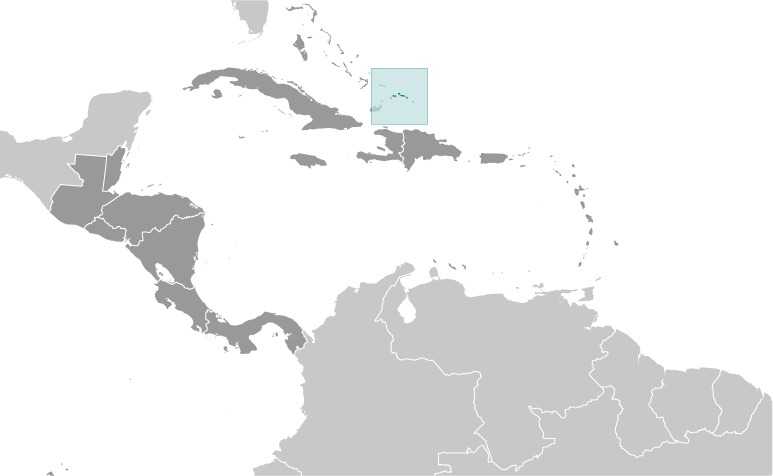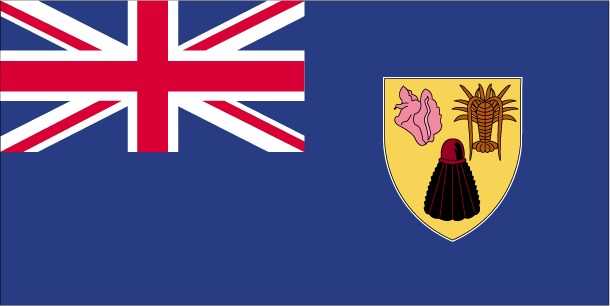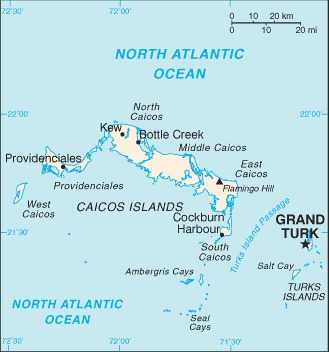Introduction
Background
The islands were part of the UK's Jamaican colony until 1962, when they assumed the status of a separate crown colony upon Jamaica's independence. The governor of The Bahamas oversaw affairs from 1965 to 1973. With Bahamian independence, the islands received a separate governor in 1973. Although independence was agreed upon for 1982, the policy was reversed, and the islands remain a British overseas territory.
Geography
Area
total: 948 sq km
land: 948 sq km
water: 0 sq km
Climate
tropical; marine; moderated by trade winds; sunny and relatively dry
Natural resources
spiny lobster, conch
People and Society
Population
total: 60,439
male: 30,389
female: 30,050 (2024 est.)
Ethnic groups
Black 87.6%, White 7.9%, mixed 2.5%, East Indian 1.3%, other 0.7% (2006 est.)
Languages
English (official)
Religions
Protestant 72.8% (Baptist 35.8%, Church of God 11.7%, Anglican 10%, Methodist 9.3%, Seventh Day Adventist 6%), Roman Catholic 11.4%, Jehovah's Witness 1.8%, other 14% (2006 est.)
Population growth rate
1.77% (2024 est.)
Government
Government type
parliamentary democracy
Capital
name: Grand Turk (Cockburn Town)
Executive branch
chief of state: King CHARLES III (since 8 September 2022); represented by Governor Dileeni Daniel-SELVARATNAM (since 29 June 2023)
head of government: Premier Washington MISICK (since 19 February 2021)
Legislative branch
description: unicameral House of Assembly (21 seats; 15 members in multi-seat constituencies and a single all-islands constituency directly elected by simple majority vote, 1 member nominated by the premier and appointed by the governor, 1 nominated by the opposition party leader and appointed by the governor, and 2 from the Turks and Caicos Islands Civic Society directly appointed by the governor, and 2 ex-officio members; members serve 4-year terms)
Economy
Economic overview
British Caribbean island territorial economy; GDP and its tourism industry hit hard by COVID-19 disruptions; major biodiversity locale; US dollar user; fossil fuel dependent; negative trade balance; increasing unemployment
Real GDP (purchasing power parity)
$946.893 million (2022 est.)
$891.613 million (2021 est.)
$817.993 million (2020 est.)
Real GDP per capita
$20,700 (2022 est.)
$19,800 (2021 est.)
$18,500 (2020 est.)
Agricultural products
corn, beans, cassava (manioc, tapioca), citrus fruits; fish
Industries
tourism, offshore financial services
Exports
$826.824 million (2018 est.)
$602.581 million (2017 est.)
$741.173 million (2016 est.)
Exports - partners
Togo 61%, US 13%, Zimbabwe 6%, Democratic Republic of the Congo 3%, Central African Republic 2% (2022)
Exports - commodities
fertilizers, shellfish, plastics, sulfur, soybean oil (2022)
Imports
$544.219 million (2018 est.)
$484.842 million (2017 est.)
$438.041 million (2016 est.)
Imports - partners
US 75%, Dominican Republic 6%, Italy 3%, Switzerland 2%, China 2% (2022)
Imports - commodities
refined petroleum, cars, plastic products, furniture, aluminum structures (2022)
Page last updated: Thursday, May 23, 2024




